Feature Article INVESTING IN VIETNAM 3

Thang Long Industrial Park supports manufacturers which are entering Vietnam to restructure their supply chains.

It provides a stable supply of electricity, water, and other infrastructure, legal support,and even holds events to build friendship.

There's also much to gain for the Vietnam side, with stable tax revenues, job creation,and technology transfers in various fields.
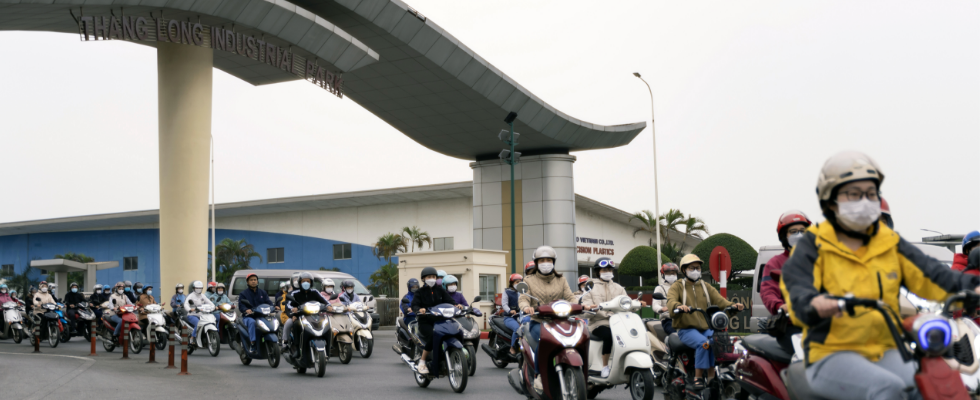
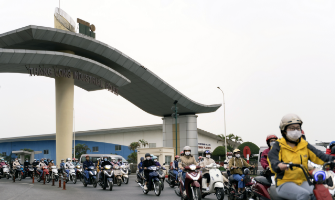
Workers start returning home just after 5 p.m. As the railway network is still in development in Vietnam, motorbikes are usually used for commuting (photo taken at the main gate of the Thang Long Industrial Park).
Vietnam was selected because of its young and diligent workers, and inexpensive labor
Hanoi is Vietnam's capital and a megapolis with a population of over 8 million. A 30-minute drive north from the city center, across the Red River (Hong River), sits a concentration of industrial plants on a vast expanse of land. The Thang Long Industrial Park (TLIP I) is home to a total of 106 companies, ranging from Japanese global corporations such as Canon, Denso, and Yamaha to leading small and medium-sized manufacturing companies, which combined employ some 60,000 people.
Established in 1997 as a joint venture between Sumitomo Corporation and a Vietnamese company, it is cited as a “successful example of an industrial park.” Two more parks have since been developed on the outskirts of Hanoi, with establishment of the Thang Long Industrial Park II (TLIP II), in 2006, and Thang Long Industrial Park III (TLIP III) in 2015. WACHI Satoru, who was seconded from the Overseas Industrial Park Department of Sumitomo Corporation to serve as the deputy general director of TLIP II and III, explains as follows:
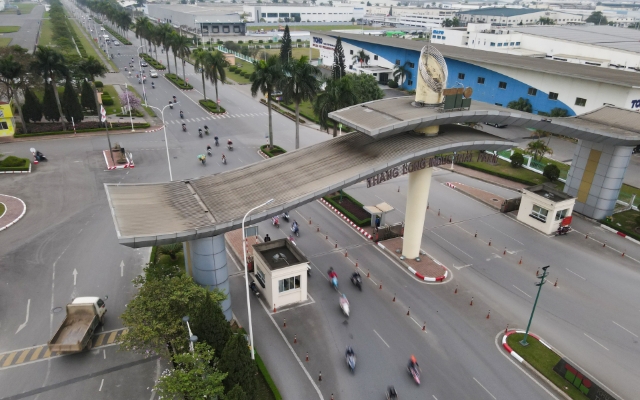
“The concept of this business is to attract Japanese and non-Japanese manufacturers by laying the groundwork using the format of industrial parks in countries that, from a Japanese perspective, lack developed infrastructure or systems. Our main targets are ASEAN countries, plus India. Vietnam is one of them, and although it might be considered a success story in hindsight, I believe that the establishment of TLIP I in 1997 was quite challenging.”
Sumitomo Corporation was looking for a place to invest in the “industrial park format.” The business in Indonesia was already on track, and Vietnam was the next destination of choice. Vietnam has a large, young workforce, low labor costs, and a national character of diligence and pro-Japan sentiments. With the shift to the Doi Moi policy, Vietnam began to show solid growth in the 1990s.
However, developments were at the time centered in the south, home to Vietnam's largest city, Ho Chi Minh City. In the north, where Hanoi is situated, the underdevelopment of roads, ports, and other infrastructure was a bottleneck to companies entering the market.
A quarter of a century has passed since the establishment of TLIP I, and there are now said to be more than 300 industrial parks in Vietnam, including those funded with local capital, by other Japanese trading companies, and companies from countries such as Thailand, South Korea, and Singapore. When looking just at the leasing fees, “Thang Long is relatively expensive,” notes WACHI, but available slots are quickly filled. The series of expansions it has undergone demonstrate its popularity. What is the reason for this?

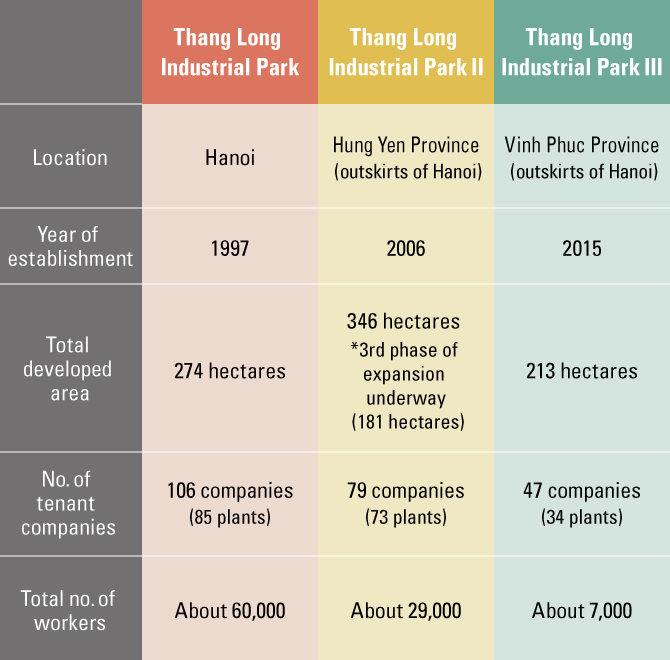
“When it comes to operations in ASEAN, there are a lot of things that have to be considered before starting to actually manufacture. These include matters such as: Will there be a stable supply of power? How is the quality of water? How can we properly hire people? How do we deal with frequently changing laws? We take care of all of these steps that need to be dealt with in advance so the companies can dedicate themselves to manufacturing. I think that is what they really appreciate,” says WACHI.
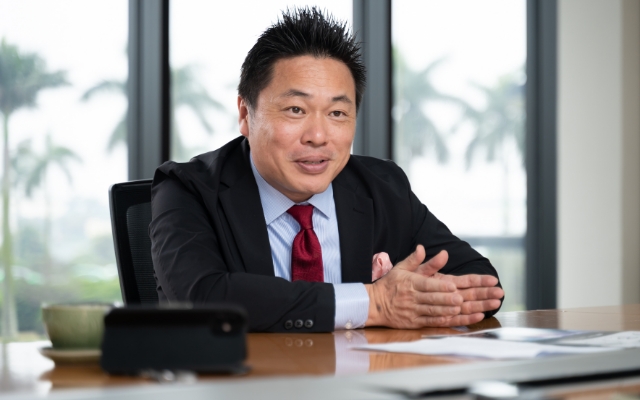
WACHI Satoru, who was seconded from the Overseas Industrial Park Department of Sumitomo Corporation, is engaged in the operation of Thang Long Industrial Park in Hanoi, Vietnam.
Posting Japanese staff to provide support for environmental compliance and digital transformation
TLIP has its own power substation for electricity and thoroughly controls the quality of groundwater and rainwater shared as industrial water. Stable supply of infrastructure services is realized through strict daily maintenance of these facilities.
“Although the frequency of power outages in Hanoi has recently been decreasing, there are still a lot of power failures when you go to the outskirts of the city. Momentary voltage fluctuations that make the lights and TV in your room suddenly go off happen about 1000 times a year. In TLIP however, momentary voltage fluctuations only occur about 20 to 30 times a year.”
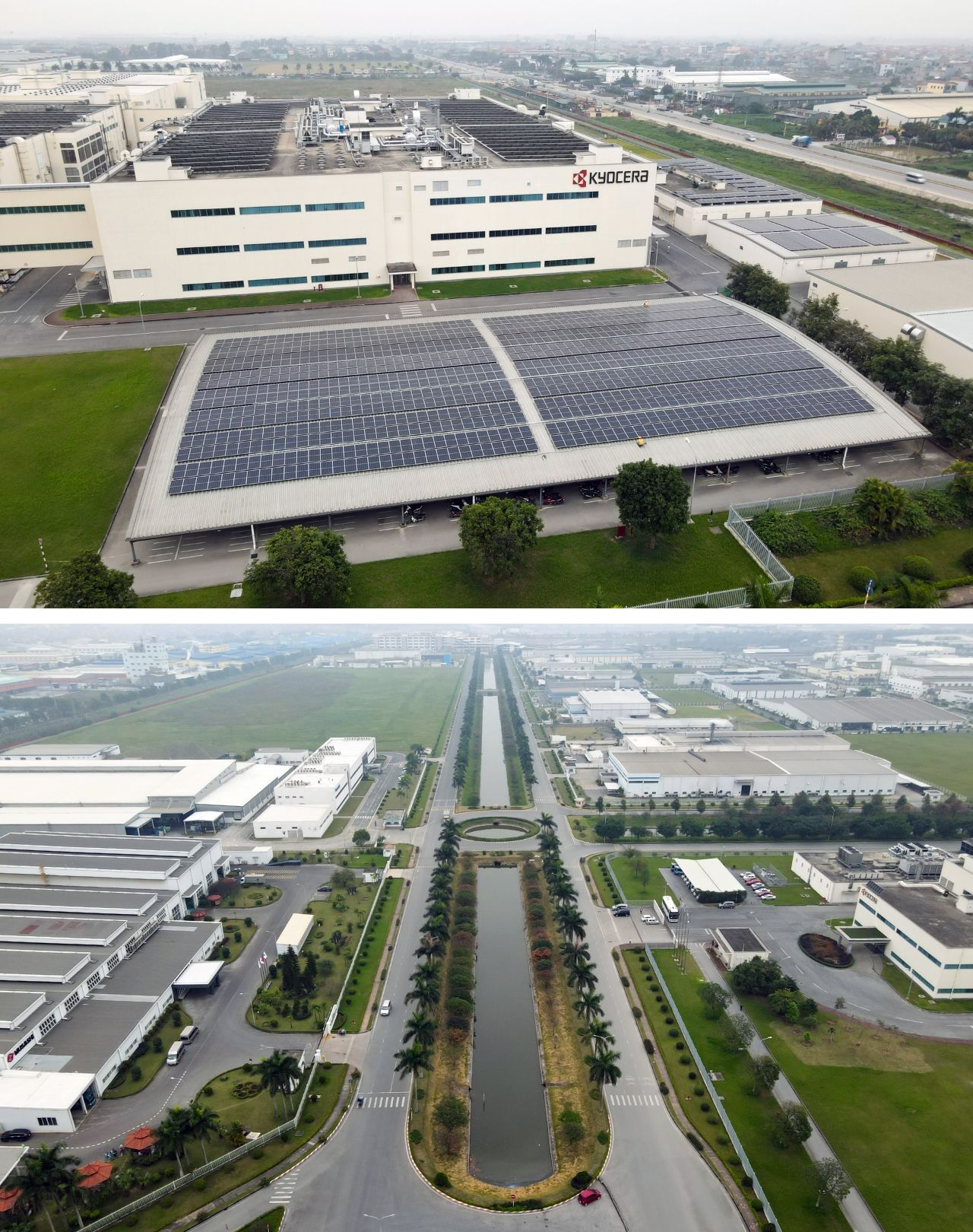
Solar panels being installed on factory roofs in TLIP to secure a stable supply of power and as an environmental measure (top). The vast site is even equipped with channels and retention basins to store rainwater for flood control (bottom). (Both photos are of TLIP II).
Five Japanese staff members are also posted to each of the three TLIPs. While constantly exchanging information with the tenant companies, they provide input on changes in laws and systems, and recently have even started to provide support for environmental compliance and the digital transformation of plants and company management.
The sense of security that comes from all this was also cited as an advantage by KAWABE Kazuharu, president of Suzuran Viet Nam, the local subsidiary of medical and hygiene products manufacturer Suzuran Medical Inc., which makes cotton products at TLIP II. “Our plant is operating 24/7 on a four-shift system. In the five years we have been here, we have had no major problems with power or water. It is also a great help to us that they check our government-related documents and provide us with information in Japanese.”
Active efforts are also taken to regularly hold events in the industrial park to deepen friendship among the tenant companies and their employees. WACHI takes pride in this, saying, “We value the Japanese aspect of the park. We want the Vietnamese people, who are generally pro-Japanese, to be even more positive toward Japan. In the spring, we hold an inter-company ekiden long-distance relay race, and in the summer, we hold a summer festival, inviting the employees of our tenants and their families. There are food stalls, and even a mikoshi portable shrine to carry. The Vietnamese people seem to find this fresh and exciting, and we always have a big turnout.”
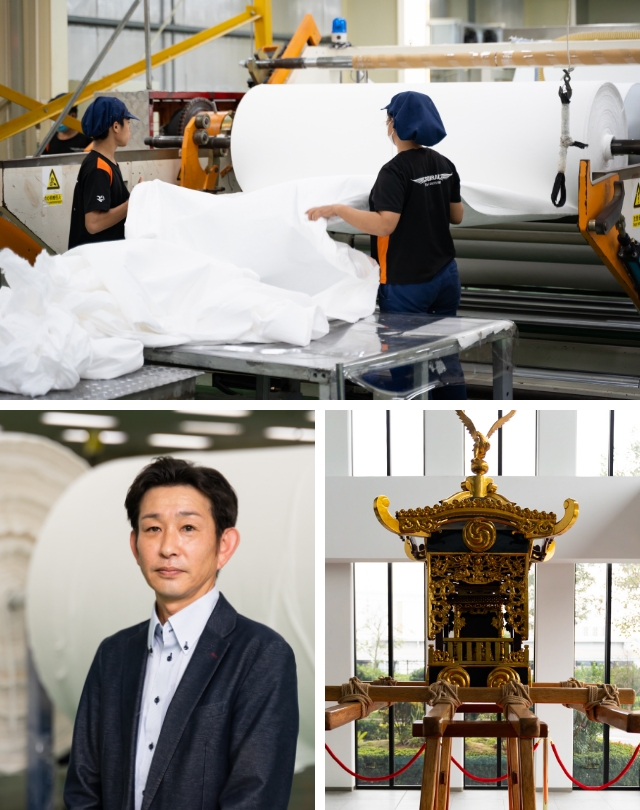
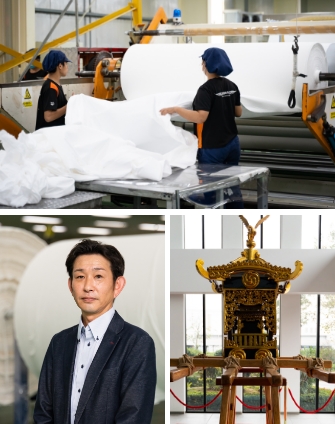
KAWABE Kazuharu is General Director and President of Suzuran Viet Nam, a subsidiary of Suzuran Medical Inc., which is headquartered in Nagoya, Japan (lower left). The company manufactures cotton products at its factory in TLIP II from raw materials procured from Indonesia and South Korea (top). This mikoshi portable shrine for the industrial park’s summer festival was specially built by a Vietnamese temple carpenter (lower right).
Vietnam is an ideal destination for company expansion. Some challenges, but nothing insurmountable
For Japanese companies that are restructuring their supply chains, “When it comes to the infrastructure or the political system, Vietnam has some challenges, but nothing insurmountable. And its low risk and good balance are advantages when compared to other countries,” explains WACHI. Although labor costs are now higher than in Laos or Myanmar, the political system is stable. In addition, Hanoi is home to more than half of the country's top 20 universities, which makes it easier to hire Vietnamese executive candidates and engineers.
Nevertheless, expanding overseas is not easy, whether it be to Vietnam or elsewhere, especially for small and medium-sized companies. One approach would be to find a local company to partner with, but some companies may find it difficult to build good relations. In this sense, entering a Japanese-owned industrial park is a big advantage since the company can then concentrate on manufacturing.
Industrial parks are also very beneficial to Vietnam, which wants to attract foreign companies. Rather than attracting individual companies that might eventually leave, it is more advantageous to have highly reliable Japanese-affiliated industrial parks that can be expected to not only generate stable tax revenues and have a significant impact on job creation, but also facilitate the transfer of technology in a variety of fields.
According to WACHI, the industrial park has a good reputation among not only the local governments of Vietnam but also the employees. “It appears that the Vietnamese employees are proud to work for a Japanese company; they even wear their factory uniforms when they go back to their hometowns,” he says.
TLIP is currently attracting a growing number of non-Japanese tenants, including companies from Taiwan and Hong Kong. The infrastructure and operational know-how of the TLIP, which even host summer festivals, are generating effects that go beyond supporting the expansion of Japanese companies.
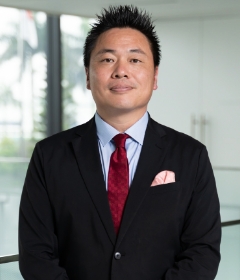

Deputy General Director
Thang Long Industrial Park II
Thang Long Industrial Park III
WACHI Satoru
Joined Sumitomo Corporation in 2001. Engaging in logistics industry-related work, he learned the basics of the business through assignments including a shipping company and the rental of containers for shipping liquids. Has been a part of the Overseas Industrial Park Department since 2014, in charge of attracting companies in Japan and the development of TLIP III. Assumed his current post in 2017.








